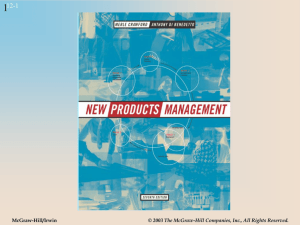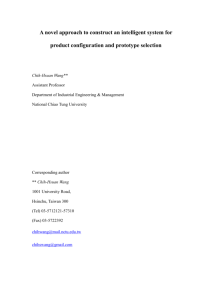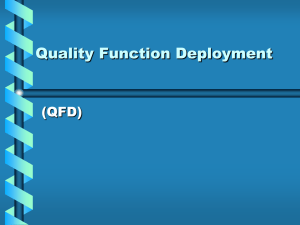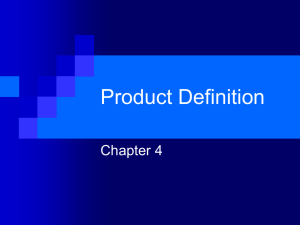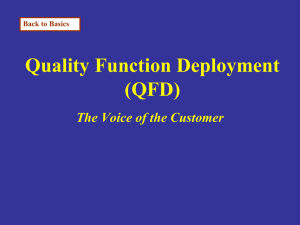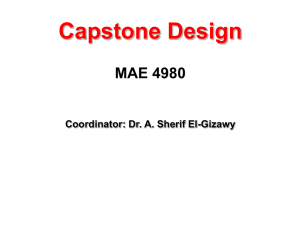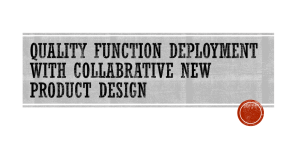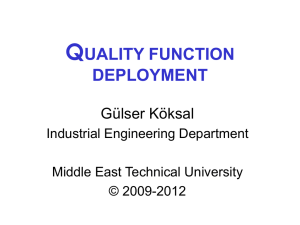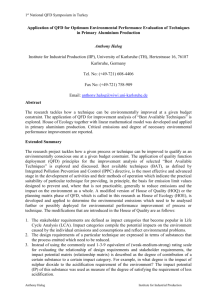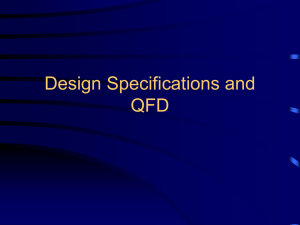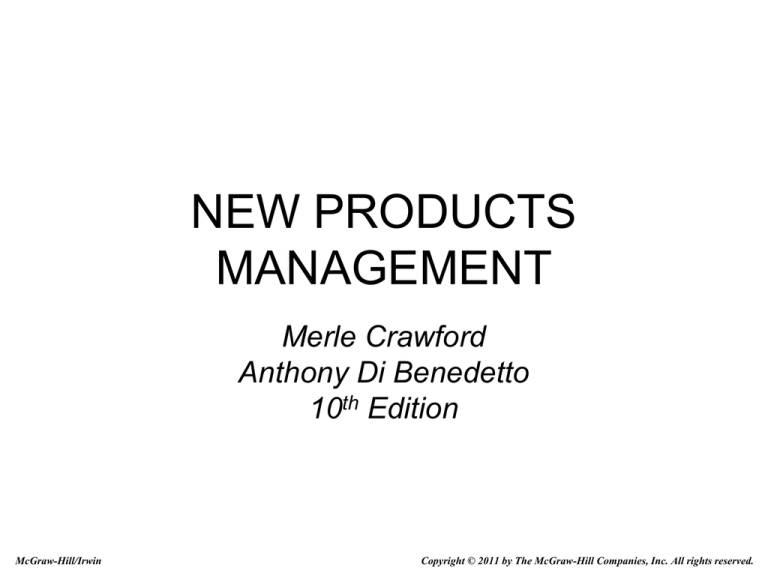
NEW PRODUCTS
MANAGEMENT
Merle Crawford
Anthony Di Benedetto
10th Edition
McGraw-Hill/Irwin
Copyright © 2011 by The McGraw-Hill Companies, Inc. All rights reserved.
Chapter 12
Product Protocol
12-2
A Marketing-R&D Conversation
MKTG: We’re going to be needing a solar-powered version of our
standard garage door opener, soon.
R&D: How reliable should it be? Should it be controllable from inside
the house? Should we use new electronics technology? Should it be
separate from the collector system already installed?
MKTG: Well, you’re the technical people, make some
recommendations.
R&D: In other words, you don’t know what you want.
MKTG: Cripes, do we have to tell you everything? What do you do for a
living? How should we know where the collectors should be
located?
R&D: If we go electronic, you’ll say it’s too expensive. If we go electric,
you’ll say we’re living in the 1930s. Wherever we put the collectors
you will say we are wrong. If we guess, you second-guess.
MKTG: OK. Put the collectors on the garage roof.
R&D: That probably can’t be done.
12-3
Why Have A Protocol?
• Also known as product requirements,
product definition, deliverables, etc.
• Doesn’t it seem obvious and simple?
• Actually is one of the top success factors
distinguishing winning from losing projects.
• Maybe because it involves more than
technical aspects.
12-4
Purposes of Protocol
• To determine what marketing and R&D groups need to do their
work.
– Think concept life cycle: this is more than a simple concept
statement, yet less than we will have when the first prototype is
available.
– Try to identify the key deliverables at this point.
• To communicate essential to all players and integrate their actions,
directing outcomes consistent with the full screen and financials.
• To set boundaries on development process or cycle time.
• To permit the development process to be managed (i.e., what needs
to be done, when, why, how, by whom, whether).
12-5
Contents of a Product Protocol
•
•
•
•
•
•
•
•
•
•
•
•
Target market
Product positioning
Product attributes (benefits)
Competitive comparison
Augmentation dimensions
Timing
Marketing requirements
Financial requirements
Production requirements
Regulatory requirements
Corporate strategy requirements
Potholes
12-6
Narrow Version of Protocol: EndUser “I Want” List
This is the “I Want” list for a new lawn leaf blower/vacuum. These
are benefits — how they are achieved is determined during
development.
• Manufacturer stands behind product — two year full warranty.
• Electrically and mechanically safe. Good value and lasts a long
time — top quality component parts, state-of-the-art
manufacturing.
• Makes yard clean-up easier — most powerful blower you can
buy.
• Converts from blower to vacuum without tools.
• Electrical cord does not come loose.
• Can be used with existing extension cord.
• Easy to maneuver.
• Clog-free vacuuming.
• Tubes go together and stay together.
12-7
Protocol Stated as Benefits:
BuiltNY
• Product concept: carrier for two wine bottles.
• Customer benefits:
– Protective, insulating, ergonomic, lightweight,
reusable, inexpensive, flexible (easy to fold)
• Result: neoprene wine bottle carriers
(inexpensive, easy to cut and dye into
designer colors).
• Spinoffs included beer carriers and babybottle carriers.
12-8
A Sample Protocol: Trash Disposal
System
• Must automate trash disposal at factory cost not to exceed
$800.
• Clean, ventilated, odor-free, no chance of combustion.
• Must be safe enough to be operated by children; outside
storage safeguards against children and animals.
• Size must be small enough to work as kitchen appliance, to
provide easy access and eliminate need for double handling of
trash.
• Simple installation
• Decor adaptable to different user tastes.
• If design requires opening of exterior walls, structural integrity
and insulation against elements must be maintained.
• User-friendly, automatic operation, easy to maintain by
technical servicepeople.
12-9
Example of Difficulty of Translating
Idea Into Product: Morton Hot Salt
• The Voice of the Customer (VOC) might
suggest this is a great idea.
• But how to translate it into a product? How
spicy? How different from regular chili
powder? Flavored more like cayenne or
chipotle?
• Without specific, precise information, food
engineers are left just to guess.
12-10
Protocol Within the New Products
Process
End User
Unmet Needs
And Problems
Market Contact New Product Group R&D Contact Engineers
Inventory of
Needs
Statement of Needs to Benefits to How to Deliver the
Be Fulfilled by Product
Deliver
Requested Benefits
PROTOCOL
Benefit to
Feature
Conversion
(Specs)
Finished
Product
Prototype
Confirmed
Evaluate Prototype;
Further Development
R&D Delivers Features Delivered;
Prototype
Lab Assesses Performance
End User Market Contact New Product Group R&D Contact Engineers
12-11
Quality Function Deployment
(QFD)
• A technique designed to insure that customer
needs are focused on throughout the new
product project.
• First step is the House of Quality (HOQ): gathers
desired attributes from customers and translates
them to engineering characteristics.
• Requires inputs from marketing and technical
personnel; encourages communication and
cooperation across the functional areas.
12-12
QFD and Its House of Quality
12-13
Benefits in QFD Example
•
•
•
•
Compatibility
Print quality
Ease of use
Productivity
12-14
Technologies in QFD Example
•
•
•
•
•
•
•
Postscript compatible
Resolution
Edge sharpness
Duplex printing
Hours training required
Speed (text)
Speed (graphics)
12-15
Tradeoffs in QFD Example
• Improving resolution slows down text
printing and really slows down graphics
printing.
• Increasing edge sharpness slows down
both text and graphics printing.
• Duplex printing speeds up text and
graphics printing.
• Postscript compatibility improves
resolution and edge sharpness.
12-16
Moving to Later Stages of
QFD
House of Quality:
Engineering Characteristics
Customer Attributes
Converted to:
Parts Deployment:
Parts Characteristics
Engineering Characteristics
Converted to:
Process Planning:
Parts Characteristics
Process Operations
Converted to:
Production Planning:
Process Operations
Production Requirements
Converted to:
Source: Adapted from John R. Hauser and Don Clausing, “The House of Quality,” Harvard Business
Review, May-June, 1988.
12-17
QFD Realities
• Substantial cost and time commitment.
• Only mixed results in some applications.
• Requires top management support and
commitment.
• Must be viewed internally as an investment.
• Requires good functional integration.
• May work better if the team members have a
successful track record of working together
before.
12-18
Improving QFD Efficiency
• Concentrate on only some of the Engineering
Characteristics: the most critical, or the ones
where improvements are easy to accomplish.
• Organize the Engineering Characteristics into
groups, and designate responsibility to
functional areas.
• Do cost-benefit analysis on each Engineering
Characteristic to determine which provide the
greatest benefit relative to cost of improvement.
12-19

